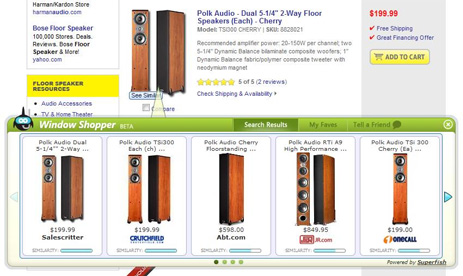Superfish: Watch out Google Boutiques, Goggles

Have you heard of Superfish? I hadn't until a couple of weeks ago when I had the opportunity to interview a spokesman for the company, Joe Dew. While Google has made headlines with its Boutiques online fashion site (built around technology from its like.com acquisition), Superfish has been engineering a really impressive visual search competitor.
Nobody has perfected visual search yet. The processing power required to upload a picture and accurately search the web based on the image just isn't quite there yet and it's computationally very complex. For those of you who have tried Google Goggles on your Android phone, you know that it's interesting, occasionally fun, and, in most cases, more of a novelty than anything really useful.
Superfish is just as interested in this ideal of upload a picture and get lots of results, but has worked around some of the technical difficulties by focusing on retail channels (just as Boutiques has) and developing an extremely large database of images from retail partners. In what is largely a proof-of-concept, Superfish has created a Firefox and Internet Explorer add-on called Window Shopper. When users encounter one of hundreds of retail sites partnered with Superfish, they are presented with the option to "See similar" items when they hover over a product photograph.
The add-on works quite well on sites ranging from Amazon to Walmart. A search on Musician's Friend for Ibanez bass guitars yielded not only competing models on other musical instrument sites (based on their appearance), but also better deals on other web sites when an exact image match was available.
Here's an example from a search for Polk Audio stereo speakers:

Perhaps the most interesting facet of Window Shopper, however, is the potential for monetization based on usage data collected by Superfish. When potential customers were presented with visual options for similar or competing items, they had click-through rates on the images surfaced by Window Shopper as high as 20%. Typical banner ads have CTRs on the order of .2%. Thus, there is a very attractive value proposition for advertisers and partners to look at Superfish as a way to drive traffic.
In particular, Superfish identified electronics, apparel, and home and garden as the three categories with the highest CTRs. It will be interesting to see what other trends emerge as visual search becomes more commonplace and the statistical samples aren't drawn from just early adopters.
At any rate, while Google may be the reigning king of search, the company is hardly the king of visual search. As the technology matures, there is more than enough room for competition in that segment of the market.